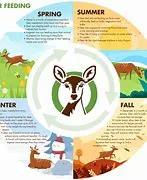Outdoor cooking in the Canadian backcountry isn’t just about feeding yourself—it’s about honoring the hunt, connecting with nature, and mastering the art of wild game dishes cuisine. Whether you’re simmering moose stew over a fire or searing duck breast on cast iron, these recipes are built for rugged terrain, unpredictable weather, and the wild meat you’ve worked hard to harvest.
Let’s unlock the vault.
🔧 Essential Gear for Backcountry Wild Game Cooking
Before diving into recipes, you need gear that performs in the wild—rain, snow, or wind.
🔹 Must-Have Tools for Wilderness Cooking
- Dutch oven for slow-cooked stews
- Tripod or fire anchor for hanging pots
- Cast iron skillet for searing meats
- Maple wood chips for smoking flavour
- Portable meat thermometer for CFIA-safe temps
🔹 Fire Safety & Cooking Regulations in Canadian Parks
Always check with Parks Canada for fire bans and cooking permits. Use designated fire rings and follow Leave No Trace principles.
🍲 The 7 Wild Game Dishes That Actually Work in the Backcountry
These dishes are field-tested, nutrient-dense, and packed with flavour. Each one is optimized for outdoor conditions and uses ingredients that travel well.
🥘 1. Moose Stew with Root Vegetables (Dutch Oven Method)
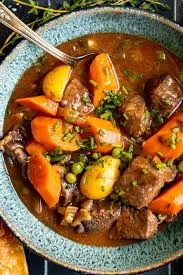
🥘 Ingredients
- Moose meat – 1¼ lb (575 g), cubed
- Vegetable oil – 2 tsp
- Onion – 1 large, chopped
- Celery stalks – 3, chopped
- Carrots – 5, peeled and chopped
- Yellow potatoes – 5, peeled and diced
- Frozen mixed vegetables – 3 cups
- Beef broth – 4 cups (low sodium)
- Dried herbs – ½ tsp each of parsley and thyme
- Bay leaves – 4
- Black pepper – 1 tsp
- Optional: Worcestershire sauce and tomato sauce for added depth2
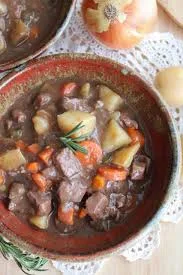
🔥 Dutch Oven Method
- Brown the meat Heat oil in your Dutch oven over medium heat. Brown the moose meat in batches and set aside.
- Sauté aromatics Add onions to the pot and cook for 2–3 minutes. Stir in celery and carrots, cooking for another 7–8 minutes.
- Combine ingredients Return moose meat to the pot. Add broth, potatoes, frozen vegetables, herbs, bay leaves, and pepper. Stir well.
- Simmer low and slow Cover and reduce heat to low. Simmer for about 2 hours, or until meat is tender and vegetables are soft. Internal temp of moose should reach 165°F (74°C).
- Optional thickening Mix 3 tbsp flour with 2 tbsp water and stir into the stew. Simmer for 10 more minutes to thicken.
- Final touch Remove bay leaves. Let the stew rest off heat for 30–60 minutes to let flavors meld.
🍞 Serving Suggestion
Method: Brown meat in cast iron, add veggies and stock, simmer over low heat for 2–3 hours. Serve with bannock or wild rice.
🌶️ 2. Venison Campfire Chili with Smoked Beans

Ingredients:
- 1 lb g🥩 Ingredients
- 2 lb ground venison (coarse-ground preferred for texture)
- 2 tbsp oil (vegetable or olive)
- 1 medium onion, diced
- 3 hatch chiles, roasted and chopped (or 4 oz canned green chiles)
- 4 cloves garlic, minced
- 2 cups venison or beef stock
- ¼ cup tomato paste
- 1 can fire-roasted diced tomatoes (15 oz)
- 1 can charro beans (15 oz) – or substitute smoked kidney beans
- 1 tbsp Worcestershire sauce
- 1 tsp smoked or sea salt
- 1 tbsp chili powder (ancho or red)
- 1 tbsp coffee chili rub (or substitute with 1 tsp cumin + pinch of ground coffee)
- Optional toppings: sour cream, shredded cheese, green onions, corn chips
🔥 Campfire Dutch Oven Method
Preheat your Dutch oven over hot coals or in a smoker at ~450°F.
- Brown the venison in oil until fully cooked and slightly crisped.
- Add aromatics: Stir in onion, chiles, and garlic. Let them soften and absorb smoke for ~1 hour.
- Build the chili: Add stock, tomato paste, tomatoes, beans, Worcestershire, salt, and spices. Stir well.
- Simmer low and slow: Cover and cook for 2+ hours, letting the flavors deepen and liquid reduce.
- Serve hot with your favorite toppings and bannock or cornbread.round venison
- Smoked kidney beans
- Fire-roasted tomatoes
- Chili powder, cumin, maple syrup
Method: Cook over open flame in a Dutch oven. Add beans and tomatoes once meat is browned. Simmer until thick and smoky.
🍳 3. Bear Sausage Skillet with Wild Onions

🧄 Ingredients
- Bear sausage – sliced into ½-inch rounds
- Wild onions or ramps – 1 cup, chopped (can substitute with green onions or leeks)
- Mushrooms – 1½ cups, sliced (wild foraged or cremini)
- Butter – 2 tbsp
- Fresh sage – 1 tsp, chopped (or ½ tsp dried)
- Salt & pepper – to taste
- Optional: splash of maple syrup or apple cider vinegar for balance
🔒 Safety Note: Bear meat must reach an internal temperature of 74°C (165°F) to kill trichinella parasites. Always use a meat thermometer.
🔥 Method (Cast Iron Skillet)
- Preheat skillet over medium heat on campfire or stove. Add butter and let it melt.
- Sauté bear sausage until browned and cooked through (internal temp 165°F). Remove and set aside.
- Add wild onions and mushrooms to the skillet. Sauté until soft and fragrant, about 5–7 minutes.
- Return sausage to skillet, sprinkle with sage, and stir to combine. Cook for another 2–3 minutes to meld flavors.
- Season to taste with salt, pepper, and a splash of maple syrup or vinegar if desired.
- Serve hot with sourdough bread, roasted root vegetables, or bannock.
This dish is ideal for early spring when ramps are in season, or late summer when mushrooms are plentiful.
🍇 4. Grouse Grilled over Cedar Plank with Berry Glaze – Wild Game Dishes
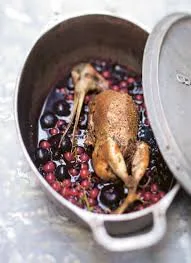
🧂 Ingredients
- Grouse breasts – spatchcocked or halved
- Cedar plank – soaked in water for at least 1 hour
- Wild berry glaze:
- ½ cup blueberries (fresh or frozen)
- 2 tbsp maple syrup
- 1 tbsp apple cider vinegar
- Pinch of salt
- Optional: splash of balsamic reduction or a few crushed juniper berries
🔥 Method
- Prep the cedar plank Soak the plank in water for at least 1 hour to prevent burning and infuse moisture.
- Make the berry glaze In a small pot, simmer blueberries, maple syrup, vinegar, and salt over low heat until thickened (about 10–15 minutes). Mash berries slightly for texture.
- Prepare the grouse Pat dry and season lightly with salt and pepper. Place skin-side up on the soaked cedar plank.
- Grill over medium flame Set the plank directly on the grill or over campfire coals. Cover loosely with foil or a lid. Cook for 20–25 minutes, until internal temp reaches 150–155°F (65–68°C).
- Glaze and finish Brush grouse with berry glaze during the final 5 minutes of cooking. Let rest for 5 minutes before serving.
🧅 5. Rabbit Stew Quebec Style with Juniper & Thyme – Wild Game Dishes
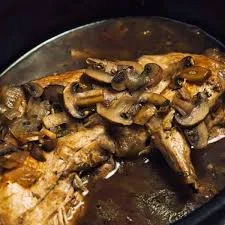
🧅 Ingredients
- Rabbit legs – 4 to 6, jointed and trimmed
- Juniper berries – 6 to 8, lightly crushed
- Fresh thyme – 4 sprigs (or 1 tsp dried)
- Onion – 1 large, sliced
- Carrots – 2, chopped
- Turnips – 2, peeled and cubed
- Red wine – 1½ cups (dry, like Pinot Noir or Cabernet Franc)
- Chicken or game stock – 2 cups
- Butter or duck fat – 2 tbsp
- Salt & pepper – to taste
- Optional: bay leaf, garlic, or a splash of maple syrup for a Quebecois twist
🍲 Method (Dutch Oven or Campfire)
- Brown the rabbit Heat butter in a Dutch oven over medium heat. Season rabbit legs with salt and pepper, then brown on all sides. Remove and set aside.
- Sauté aromatics Add onions, carrots, and turnips to the pot. Cook until softened, about 5–7 minutes.
- Deglaze with wine Pour in red wine and scrape up any browned bits. Simmer for 2–3 minutes to reduce slightly.
- Add rabbit and herbs Return rabbit to the pot. Add stock, juniper berries, thyme, and optional bay leaf. Cover and simmer gently for 1½ to 2 hours, until meat is tender and falling off the bone.
- Final seasoning Taste and adjust seasoning. Add a splash of maple syrup if desired for balance.
- Serve hot Pair with crusty bread, mashed potatoes, or wild rice.
🌲 6. Duck Breast Seared on Cast Iron with Spruce Tips – Wild Game Dishes
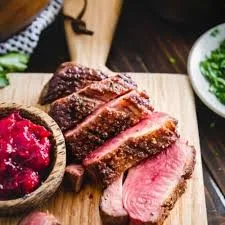
🦆 Ingredients
- Duck breasts – 2, skin-on
- Spruce tips – ¼ cup, finely chopped (fresh, young tips only)
- Butter – 2 tbsp
- Garlic – 2 cloves, smashed
- Salt & pepper – to taste
- Cherry reduction (optional glaze):
- ½ cup cherry preserves or fresh cherries
- 2 tbsp balsamic vinegar
- 1 tsp maple syrup
🍳 Cast Iron Method
Rest and slice Let duck rest for 5 minutes before slicing. Serve over wild rice or roasted root vegetables.
Score the duck skin Use a sharp knife to score the skin in a crosshatch pattern—this helps render fat and crisp the skin. Season both sides with salt and pepper.
Sear skin-side down Heat cast iron skillet over medium heat. Place duck breasts skin-side down (no oil needed). Cook for 6–8 minutes, until skin is golden and fat is rendered.
Flip and finish Turn duck breasts over and cook for another 4–5 minutes for medium-rare (internal temp ~135°F / 57°C).
Add spruce tips and butter In the final minute, add butter, garlic, and chopped spruce tips. Baste the duck with the infused butter for a fragrant finish.
Optional cherry glaze In a separate pan, simmer cherry preserves, balsamic vinegar, and maple syrup until thickened. Drizzle over duck before serving.
🧂 7. Bison Burgers with Indigenous Spice Blend – Wild Game Dishes

🧂 Ingredients
- 1 lb ground bison (lean, grass-fed preferred)
- 1 tsp smoked paprika
- ½ tsp ground sumac (adds tangy depth)
- ½ tsp dried wild sage (or regular sage)
- 1 small onion, finely grated
- 1 egg (for binding)
- ¼ cup breadcrumbs (optional for texture)
- Salt & pepper – to taste
- Optional: pinch of chili flakes or maple sugar for heat/sweet balance
🔥 Method (Grill or Cast Iron)
- Mix the blend In a bowl, combine ground bison with spices, onion, egg, and breadcrumbs. Mix gently—don’t overwork the meat.
- Form patties Shape into 4 equal patties. Make a small dimple in the center of each to prevent puffing.
- Grill or sear Cook over medium-high heat on a grill or cast iron skillet for 3–4 minutes per side, or until internal temp reaches 140–145°F (60–63°C) for medium.
- Rest and serve Let burgers rest for 5 minutes. Serve on bannock, sourdough, or wild rice buns with toppings like berry chutney, wild mustard, or pickled ramps.
🧼 Wild Game Prep & Safety in the Field
🔹 Field Dressing Tips for Backcountry Hunts
- Use gloves and sterilized knives
- Avoid puncturing intestines
- Cool meat quickly using snow or stream
🔹 Safe Storage & Parasite Prevention
- Freeze bear meat for 3+ weeks before cooking
- Use vacuum-sealed bags
- Label species and harvest date
🪶 Cooking with Respect: Indigenous Traditions & Ethical Harvesting – Wild Game Dishes
🔹 Honouring Traditional Techniques
- Cedar plank grilling
- Smoking with sage and sweetgrass
- Using all parts of the animal
🔹 Sourcing Ingredients Sustainably
- Forage berries, herbs, and mushrooms
- Respect seasonal harvest windows
- Share meat within community
🧒 Final Tips for Outdoor Chefs in the Canadian Wilderness – Wild Game Dishes
🔹 Planning Meals Around the Hunt
- Prep spice blends and marinades ahead
- Use vacuum-sealed packs for meat
- Match recipes to species and season
🔹 Teaching the Next Generation of Outdoor Chefs
- Let kids help with fire setup and seasoning
- Share stories of the hunt and harvest
- Celebrate meals with gratitude and respect
🏁 Conclusion: From Field to Fire—Why These Recipes Matter
These dishes aren’t just meals—they’re memories, legacies, and proof of skill. Cooking wild game in the Canadian backcountry is a journey from field to fire, and every step deserves care, respect, and flavour.
Whether you’re a seasoned hunter or a curious outdoor chef, this vault is your guide to making wild game cuisine work in the wild.




